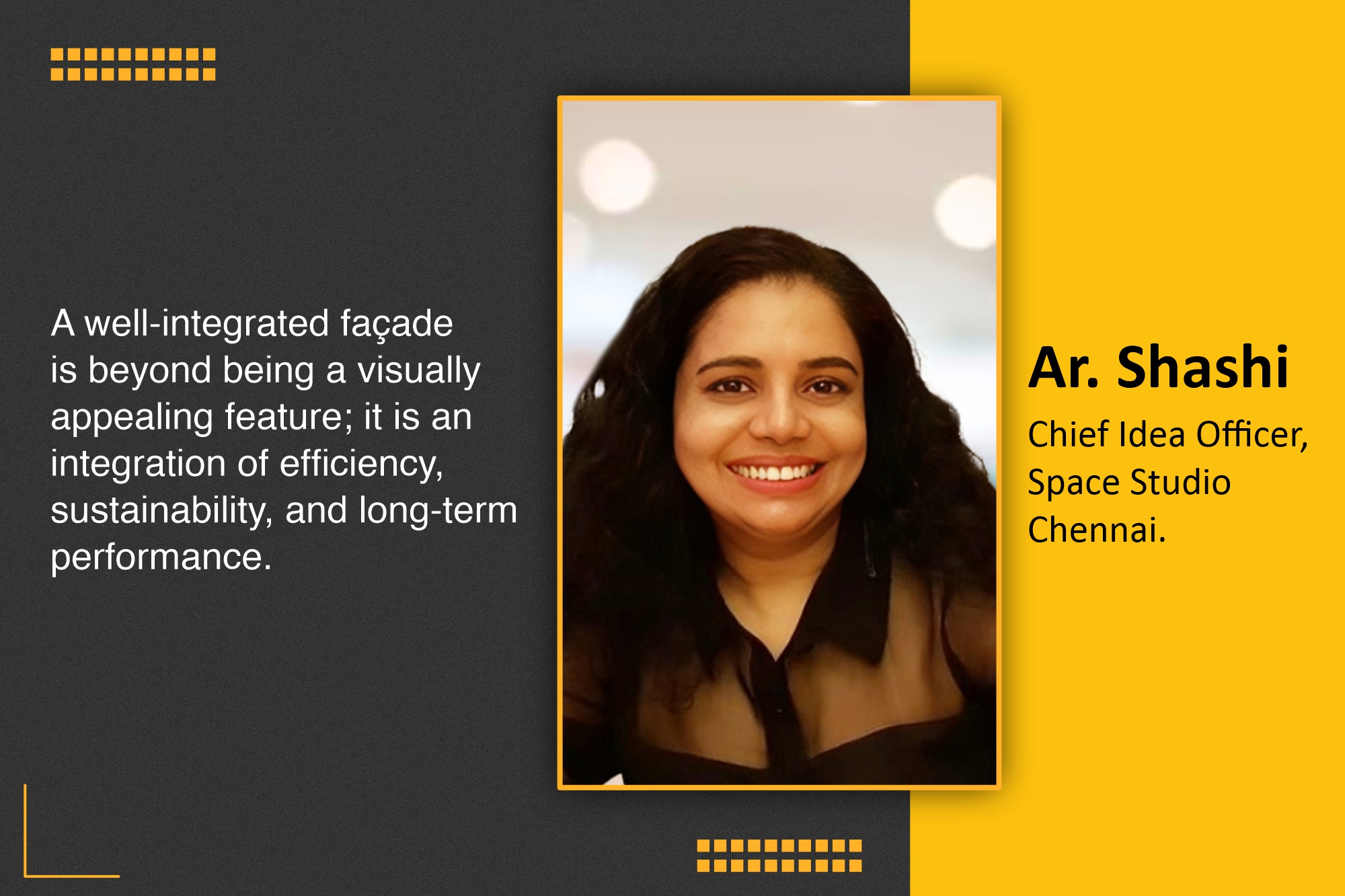An integrated approach for optimum façade performance

In this interaction, Ar. Shashi emphasises the importance of early collaboration in façade design, combining materials, technology, and engineering to maximise sustainability and energy efficiency.
Can you shed some light on the integrated façade design process that you adopt?
Facades are more than just decorative components; they regulate heat, light, and ventilation, greatly influencing a building’s energy efficiency. By incorporating architectural, engineering, and material science into the early design stages, facades can be optimised for local climate conditions, which can lower energy usage and increase occupant comfort.
I believe in the concept of integrated facade design. I normally involve MEP and structural specialists early in the project design process. It is the same with facade design. Taking a comprehensive strategy in which architecture, engineering, and sustainability collaborate to optimise a building’s facade is beneficial. If the building requires a specialised façade expert, we may also include them. This strategy ensures that we strike the appropriate balance between primary aspects such as aesthetics, energy efficiency, ventilation, and daylighting. I prioritise using passive methods and modern materials as they improve performance and lower environmental impact, and operating expenses.
My passive design principles include shading, natural ventilation, and daylight optimisation that reduce dependency on mechanical systems. Collaboration with structural engineers, MEP consultants, and sustainability experts ensures that materials, building methods, and performance measures are consistent with our environmental objectives.
With a standalone approach, facades risk becoming mere add-ons rather than practical, long-term solutions. A well-coordinated process promotes innovation in building, resulting in high-performance facades that blend aesthetics, utility, and sustainability.
What are the key considerations in material selection for façades to achieve net zero?
Thermal performance: For countries with a tropical climate like India, reducing heat absorption through exterior walls significantly reduces the air conditioning load. So, for barriers such as air corridors or verandas, a double glazing with an air gap is the best-suited option.
Sustainable material choices: From a sustainability standpoint, it is always best to use locally sourced, recycled, or low-carbon materials such as green concrete, bamboo, and engineered timber.
Durability: The longer a substance lasts, the lower its environmental impact. Choosing materials based on their durability reduces the environmental footprint.
Energy efficiency: Adaptable and responsive technologies and materials improve energy efficiency. We prioritise dynamic facades that adjust to the Sun’s course and their surroundings.
Cost optimisation: Indian investors prioritise quality for the best value. Smart, high-impact material selections facilitate cost-conscious and ROI-intensive options.
End-of-life considerations: The most preferred options are recyclable, reusable, and biodegradable materials that reduce landfill waste and support a circular economy.
How is technology leveraging the designing of high-performance facades?
Materials science: Using advanced materials such as smart glazing, self-cleaning glass, and high-performance composites improves efficiency and durability.
Parametric design: This technique uses data-driven modelling to optimise shading, ventilation, and aesthetics. By diligently employing coding in designs, optimal design solutions can be achieved.
Energy efficiency: Dynamic shading devices can be used to reduce energy consumption.
Innovation: Today, 3D printing and AI-powered simulations have improved material utilisation and performance, and AI has enabled rapid iteration.
BIM software: BIM has enabled real-time performance analysis, ensuring that facades react to environmental conditions ideally.
For more details, visit: https://spacestudiochennai.com/
Cookie Consent
We use cookies to personalize your experience. By continuing to visit this website you agree to our Terms & Conditions, Privacy Policy and Cookie Policy.










